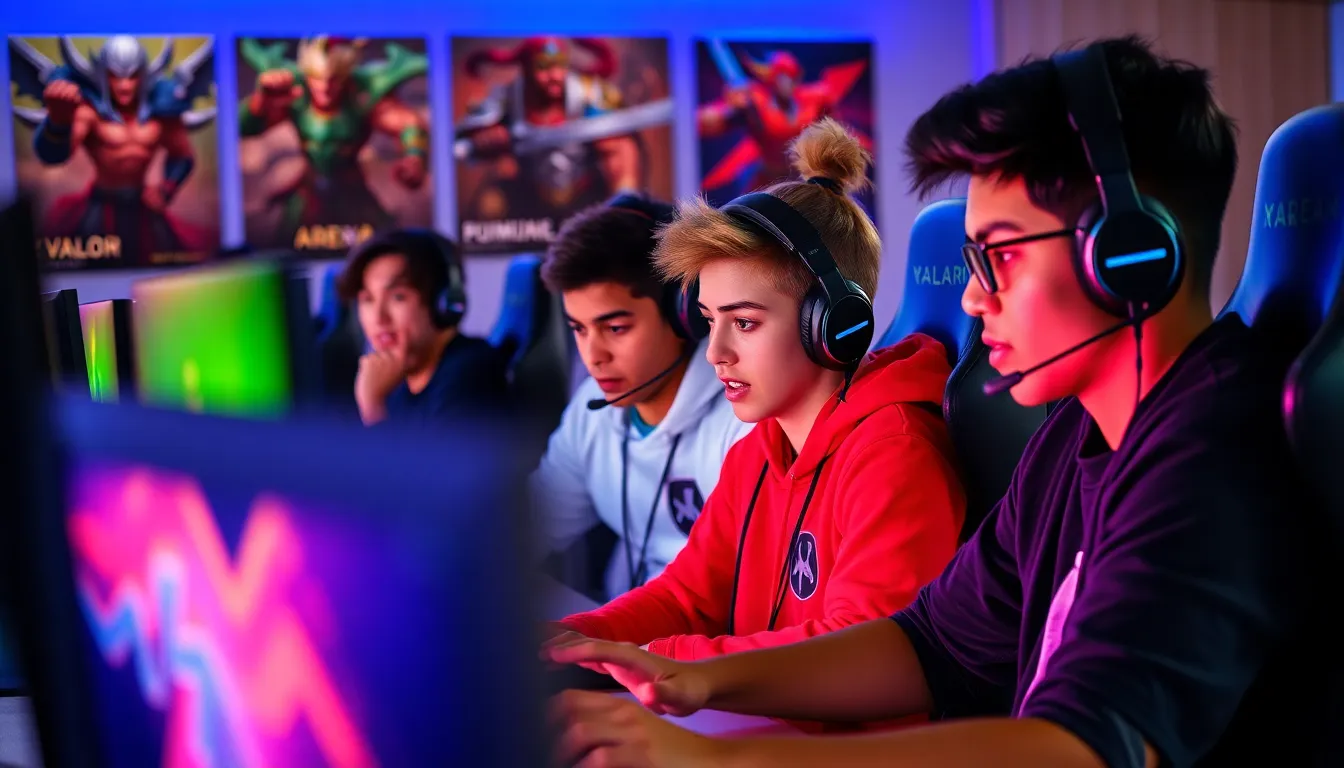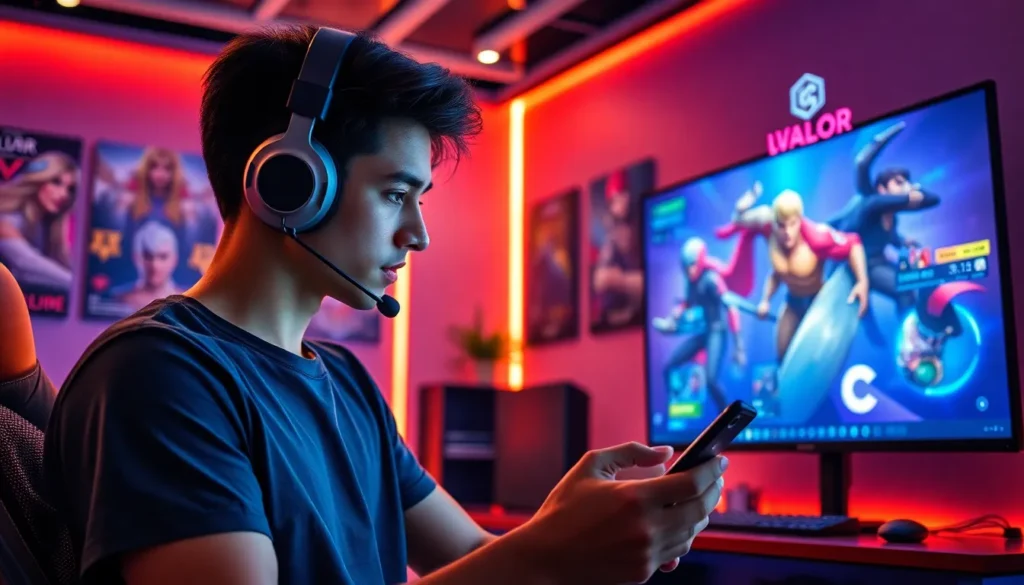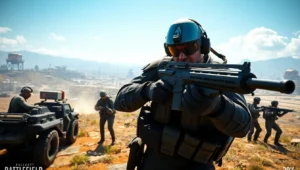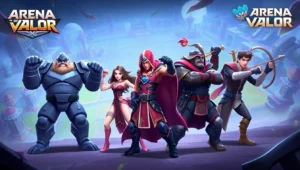In the world of mobile gaming, few titles pack as much punch as Arena of Valor. With its fast-paced action and strategic depth, it’s no wonder players are flocking to the battlefield. But let’s face it—jumping into the arena without a plan is like trying to win a cooking show with a microwave. Spoiler alert: it won’t end well.
Table of Contents
ToggleArena of Valor Competitive Guide Overview
Arena of Valor presents a dynamic environment requiring players to hone both mechanical skills and strategic thought. Understanding character roles fosters effective teamwork, leading to better performance in matches. Players categorize heroes into five roles: tank, fighter, assassin, mage, and marksman. Each role contributes uniquely, emphasizing the importance of balanced team composition.
Map awareness enhances decision-making abilities. Players should frequently check the mini-map to identify enemy positions and resource locations. Vision control through wards is crucial for anticipating enemy movements and securing objectives.
Objectives drive the game forward. Towers, jungle monsters, and the Dark Slayer influence the flow of battles. Focusing on these goals leads to strategic advantages that can shift the balance in favor of the team.
Itemization affects hero performance. Players adapt their builds based on the opposing team composition and match progression. Experimenting with various item synergies optimizes damage output and survivability.
Communication promotes synergy among team members. In-game callouts and pings keep players informed about strategies and enemy positions. Adjusting tactics based on real-time information often leads to surprise victories.
Recognizing and understanding the meta keeps players competitive. Regular updates introduce new heroes and balance changes that require adaptation. Staying informed about the latest strategies can yield a significant edge over opponents.
Practice remains key to continuous improvement. Engaging in regular matches allows players to refine their skills and develop a deeper understanding of game mechanics. Each round presents unique challenges that aid in growth.
Understanding Game Mechanics

Understanding game mechanics in Arena of Valor enhances strategic gameplay and effectiveness. Players must grasp the fundamentals to outmaneuver opponents.
Core Gameplay Elements
Core gameplay elements define the experience in Arena of Valor. Champions exhibit unique skills, each with distinct strengths. Objectives like towers, minions, and jungle camps contribute significantly to success. Players accumulate gold and experience through engagements, allowing character progression. Positioning during team fights determines victory or defeat. Effective usage of abilities plays a vital role in damage output and survivability. Map control remains crucial as it dictates available objectives and influences enemy movements.
Key Terminology
Key terminology helps players communicate effectively within the game. “Cooldown” refers to the time it takes for abilities to become available again. “Ganking” describes the tactic of ambushing an enemy for elimination. “Farm” indicates the collection of resources through minion kills and jungle camps. “Meta” highlights the current strategies or heroes favored in competitive play. “CC” stands for crowd control, which immobilizes or disrupts enemies during fights. Familiarity with this vocabulary assists players in understanding team dynamics and executing strategies more efficiently.
Hero Selection Strategies
Hero selection serves as a critical component in Arena of Valor. Choosing the right heroes can significantly influence team dynamics and victory chances.
Role Types and Their Importance
Tanks excel at absorbing damage, protecting allies, and initiating fights. Fighters balance damage and durability, making them versatile in various roles. Assassins swiftly eliminate key targets, disrupting enemy strategies. Mages provide powerful area-of-effect spells, controlling team fights and zoning enemies. Marksmen deal consistent damage from a distance, often becoming the backbone of a team’s damage output. Prioritizing these role types ensures a well-rounded team composition, allowing players to counter diverse strategies effectively.
Counter-Picking Techniques
Counter-picking stands as an essential skill in competitive play. Each hero has strengths and weaknesses; recognizing these can turn matches. Picking heroes that effectively counter opponents’ choices maximizes a team’s effectiveness. For example, selecting a crowd control-heavy champion against an assassin can neutralize threats. Observing enemy picks during the selection phase allows teams to adjust strategies accordingly. Teams should communicate to ensure balanced compositions and effective counters to enemy heroes, enhancing overall performance.
Team Composition and Synergy
Team composition plays a vital role in achieving success within Arena of Valor. Understanding how each hero complements others can significantly influence match dynamics.
Balancing Roles in Team Setup
Balancing roles ensures a well-rounded team setup. Each role—tank, fighter, assassin, mage, and marksman—offers unique strengths that contribute to various strategies. Tanks absorb damage and initiate fights. Fighters deal consistent damage while remaining durable. Assassins excel at eliminating key targets quickly. Mages provide powerful area control and burst damage, while marksmen offer sustained DPS from a distance. Prioritizing these roles enhances team synergy and effectiveness in engagements. Players must select heroes that not only fit their preferred style but also synergize effectively with their teammates’ choices.
Importance of Communication
Communication serves as the backbone of teamwork in Arena of Valor. Clear interactions allow players to coordinate strategies and time attacks efficiently. Discussions about target focus, positioning, and retreating prevent miscommunication during crucial moments. Sharing information regarding enemy locations and cooldowns bolsters map awareness. Encouraging teammates strengthens trust and enables a smoother collaborative effort. Maintaining a consistent dialogue minimizes confusion and fosters unity during gameplay. Establishing a communicative environment ultimately leads to improved team performance and enhances the chances of securing victories.
Map Awareness and Objectives
Map awareness and objective control play crucial roles in winning matches. Players must understand the dynamics of lanes and jungle interactions to gain advantages.
Understanding Jungle and Lane Dynamics
Lane and jungle dynamics significantly impact gameplay. Junglers should communicate with lane players to optimize ganking opportunities. Mid-lane champions benefit from vision control to avoid ambushes. Adopting a consistent pattern in jungle routes helps players remain efficient. Awareness of lane positions informs key decisions like when to engage or retreat. Positioning heroes in advantageous spots can deter enemy movements and secure kills. Each player’s choice affects the coordination and tempo of the entire team’s strategy.
Securing and Controlling Objectives
Objective control defines success in Arena of Valor. Securing towers increases map pressure and provides gold advantages. Players should prioritize the Dark Slayer for team-fight leverage. It’s essential to communicate effectively when aiming for objectives, ensuring all team members participate. Establishing vision around key objectives allows for better decision-making in skirmishes. Noticing enemy movements near objectives can lead to favorable ambushes or counter-attacks. Focusing on objectives over kills enhances overall team effectiveness. Prioritizing objectives builds momentum, which is necessary for securing victory.
In-Game Strategies and Tactics
Effective strategies and tactics significantly enhance gameplay in Arena of Valor. Players must adapt their approaches depending on the game stage to maximize their team’s potential.
Early Game Strategies
Utilizing an aggressive approach often pays off in the early game. Players should focus on farming minions and securing jungle resources to gain gold and experience. Laners need to communicate with their jungler, coordinating ganks to capitalize on enemy overextension. Vision control becomes crucial at this stage; placing wards in critical areas can prevent surprise attacks. Allowing room for rotation among the lanes helps in creating opportunities for kills. Prioritizing objectives, like towers, establishes an early advantage for the team.
Late Game Approaches
During the late game, team cohesion defines success. Groups should aim to stick together to effectively execute planned team fights. Assessing the enemy team’s strengths and weaknesses allows focuses on their carries first during engagements. Some players might shift their item builds to counter specific threats, increasing overall team survivability. Proper map control, including established vision around key objectives, guides decision-making for critical moments, like the Dark Slayer fight. Emphasizing positioning and ensuring the right heroes engage at the appropriate times give teams a competitive edge.
Mastering Arena of Valor requires a blend of strategic foresight and mechanical skill. Players need to prioritize communication and teamwork to create synergy within their team. Understanding hero roles and adapting strategies based on match dynamics can significantly influence the outcome of games.
Focusing on objectives over kills, maintaining map awareness, and controlling vision are essential for gaining an upper hand. By continuously refining their gameplay and staying updated on the evolving meta, players can enhance their competitive edge. With dedication and practice, anyone can elevate their Arena of Valor experience and contribute meaningfully to their team’s success.





